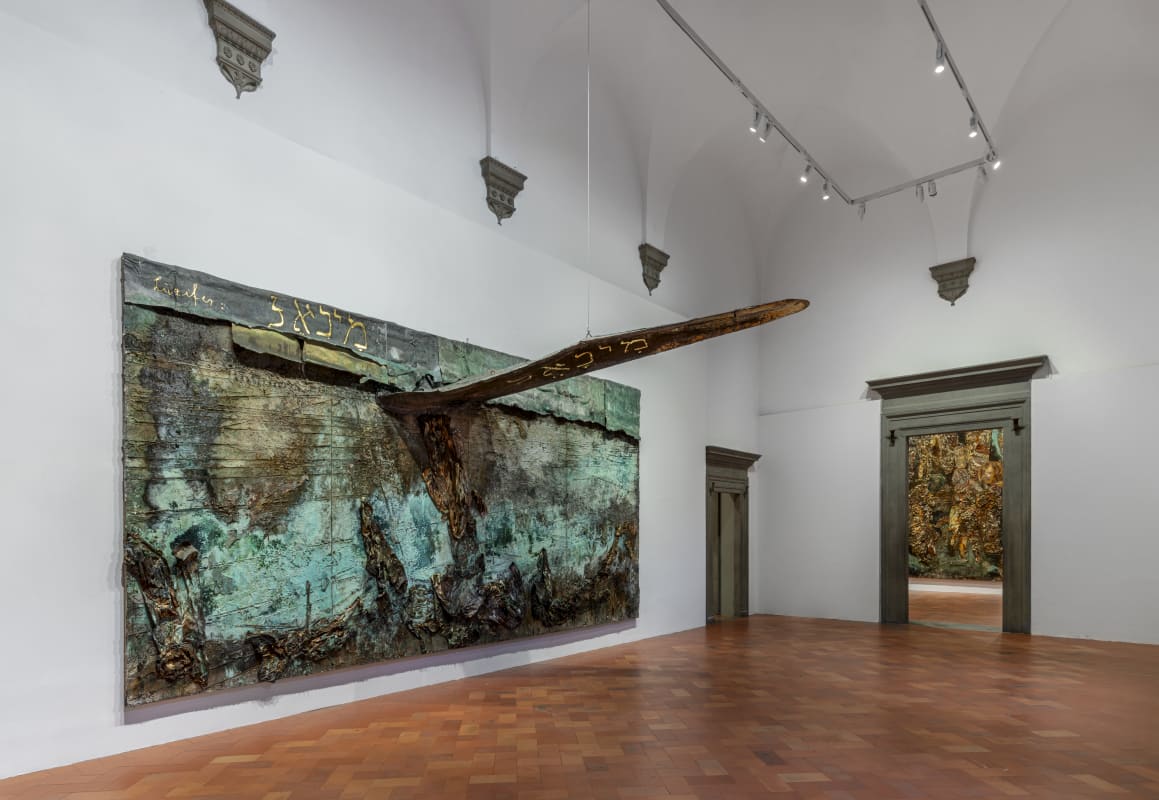Anselm Kiefer: Alchemist of the 21st Century 'Fallen Angels' at Palazzo Strozzi, Florence
By Peifen Sung
Kiefer has been fond of the Palazzo Strozzi since he was young. Even though he has become famous all over the world, being able to hold a solo exhibition there is still an important milestone in his career.
Therefore, BAZAAR ART also went to Florence, the city of art, to exclusively visit Anselm Kiefer's Genesis exhibition: "Fallen Angels".
Anselm Kiefer is one of the most important and versatile artists working today. He was born in Germany in 1945. He received an education in law and Romance languages in his early years, and later switched to art. His work touches on diverse themes such as literature, philosophy, religion, mythology and national identity. Because of his passion for reading, literature and poetry often appear in his works.
The creative materials and techniques used by Kiefer are also relatively unusual. There are almost no "unexpected" ones, only "why not thought of" materials and methods, such as lead, gold foil, ashes, plants, textiles, woodcuts, heating, electrolysis and even nuclear change.
For him, works are always "unfinished" and always in the process of creation.
The masterpiece "Engelssturz" (Fallen Angel) with the same title as the exhibition title opens the exhibition. This painting, which is more than seven meters high, was specially created by Kiefer for the atrium of the Strozzi Palace. It not only echoes the rigorous Renaissance style of the building, but also presents the style of a Gothic polyptych with a gold background. The fusion of traditional and contemporary art also echoes the exhibition’s themes of identity, history and philosophy.
In this painting, the archangel Michael holds a sword and dominates the picture, pointing to heaven. The fallen angels below are tumbling and struggling, and the modern clothing among them hints at the contemporary significance of the work.
Through art, Kiefer challenges the boundaries between spirit and matter, the struggle between good and evil, and explores the unknown world and the human condition. In addition, the work is also inspired by the Expulsion of the Rebel Angels by the Baroque era painter Luca Giordano, further linking it to tradition.
Throughout the exhibition, Kiefer’s attitude toward the artwork’s transformation emerges. Sometimes he places his works outdoors, such as "Fallen Angels"; sometimes he uses unconventional techniques, such as sprinkling the works with lime or soaking them in an electrolytic tank, so that the works show layers of change and decay, symbolizing The cycle of life and death.
The entire exhibition is divided into 9 exhibition halls, among which "Verstrahlte Bilder" (Radiant Image) in the sixth exhibition hall is particularly worth mentioning. This group of works consists of 60 paintings of various sizes, hanging on the walls and ceiling of the exhibition hall. There is also a mirror-covered platform in the center of the exhibition hall, which reflects all the paintings onto the surface of the platform. Viewers can look up at the painting or lean down to admire the art in the mirror.













































































































































































